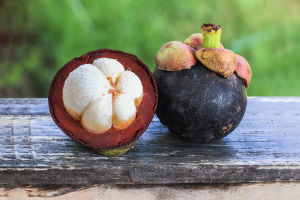Hues of Health in Food
The vibrant hues of foods like deep red strawberries, bright orange carrots, and emerald green spinach are not only visually appealing but also indicative of their rich nutritional content.
These colorful foods are often packed with vitamins, minerals, and antioxidants, contributing significantly to our overall health.
However, a common belief persists that consuming large quantities of these foods can "color" our bodies. Is there any truth to this notion?
Understanding Pigments in Food and the Human Body
The colors in foods mainly arise from natural pigments such as carotenoids, anthocyanins, chlorophyll, and betacyanin. These pigments not only impart beautiful colors to foods but also offer a variety of health benefits.
Carotenoids, for instance, are found in carrots and pumpkins and benefit vision and the immune system. Anthocyanins, present in blueberries and black rice, help reduce inflammation and improve cardiovascular health.
While the health benefits of these pigments are well-documented, the question remains: do they "color" the body when consumed in large quantities? The answer is nuanced. In some cases, there may be slight "coloring" effects, but these are typically harmless and temporary.
Carotenemia: The Orange Skin Phenomenon
Carotenemia is a classic example of how consuming large amounts of certain colored foods can result in visible changes in the body. Carotenes, a type of carotenoid found in orange and yellow vegetables like carrots, pumpkins, and sweet potatoes, can accumulate in the skin if consumed in excess.
This accumulation can cause the skin to take on an orange-yellow hue, particularly noticeable on the palms and soles. This condition, known as carotenemia, is generally benign and reversible. Reducing the intake of high-carotene foods will typically return skin color to normal within a few weeks.
Staining of Teeth and Tongue
Colored foods can also temporarily affect the color of the mouth. For example, consuming coffee may cause temporary dark staining of the teeth.
Similarly, eating blueberries or cherries can result in a blue or red tint to the tongue. These pigment attachments in the mouth are temporary and can usually be removed by brushing or rinsing.
Recognizing Yellowing in Certain Parts of the Body
While dietary factors can cause temporary changes in skin and mouth color, persistent yellowing in certain areas of the body could signal underlying health issues. Conditions such as gallstones, gallbladder cancer, and pancreatic diseases can cause bile duct obstruction, leading to obstructive jaundice.
This condition is characterized by yellow skin, yellow urine, and pale stools. Similarly, liver diseases like hepatitis, cirrhosis, and liver cancer can result in bilirubin accumulation in the blood, causing yellowing of the skin and eyes, known as jaundice.
In cases of jaundice, additional symptoms such as fatigue, nausea, vomiting, and abdominal distension often occur. Hemolytic diseases, which destroy red blood cells, can also lead to hemolytic jaundice.
It is crucial to seek medical attention if these symptoms are present, as early detection and treatment are vital for effectively managing these conditions.
The allure of colorful foods lies not just in their visual appeal but in their substantial health benefits. While consuming large quantities of these foods can sometimes result in temporary changes in skin or mouth color, these effects are generally harmless and short-lived.
Embracing a diet rich in a variety of colorful foods can enhance our nutrition and overall well-being, providing both visual and gustatory enjoyment. However, it is also crucial to remain vigilant for any persistent changes in body color, as they may indicate underlying health conditions that require medical attention.


